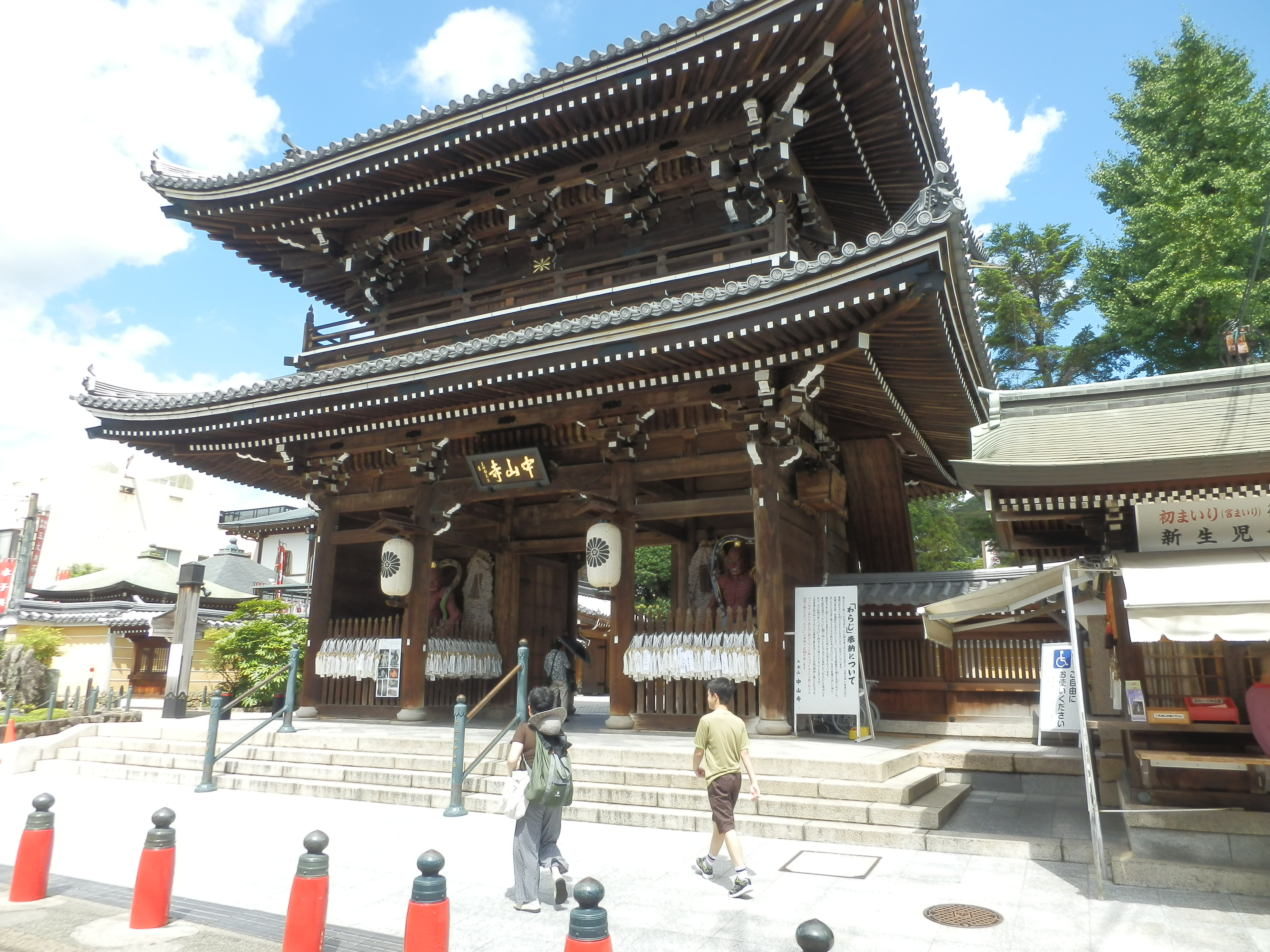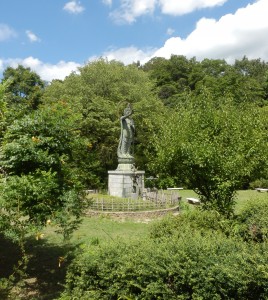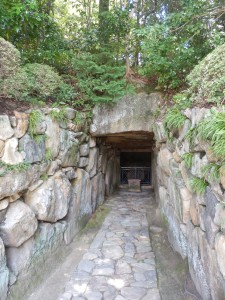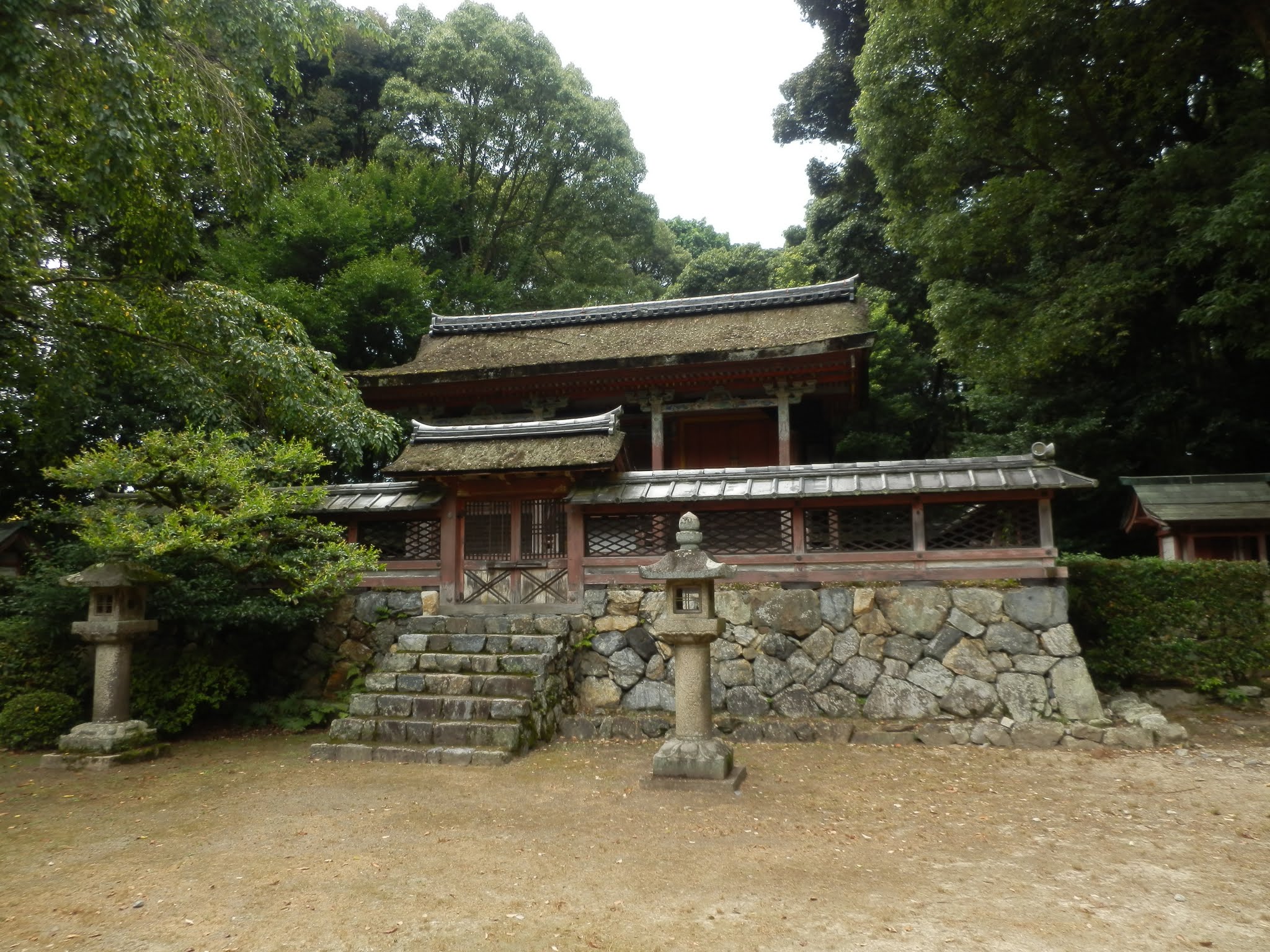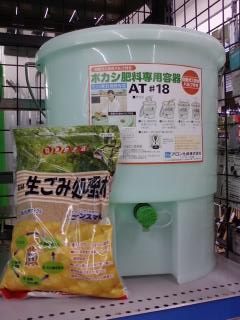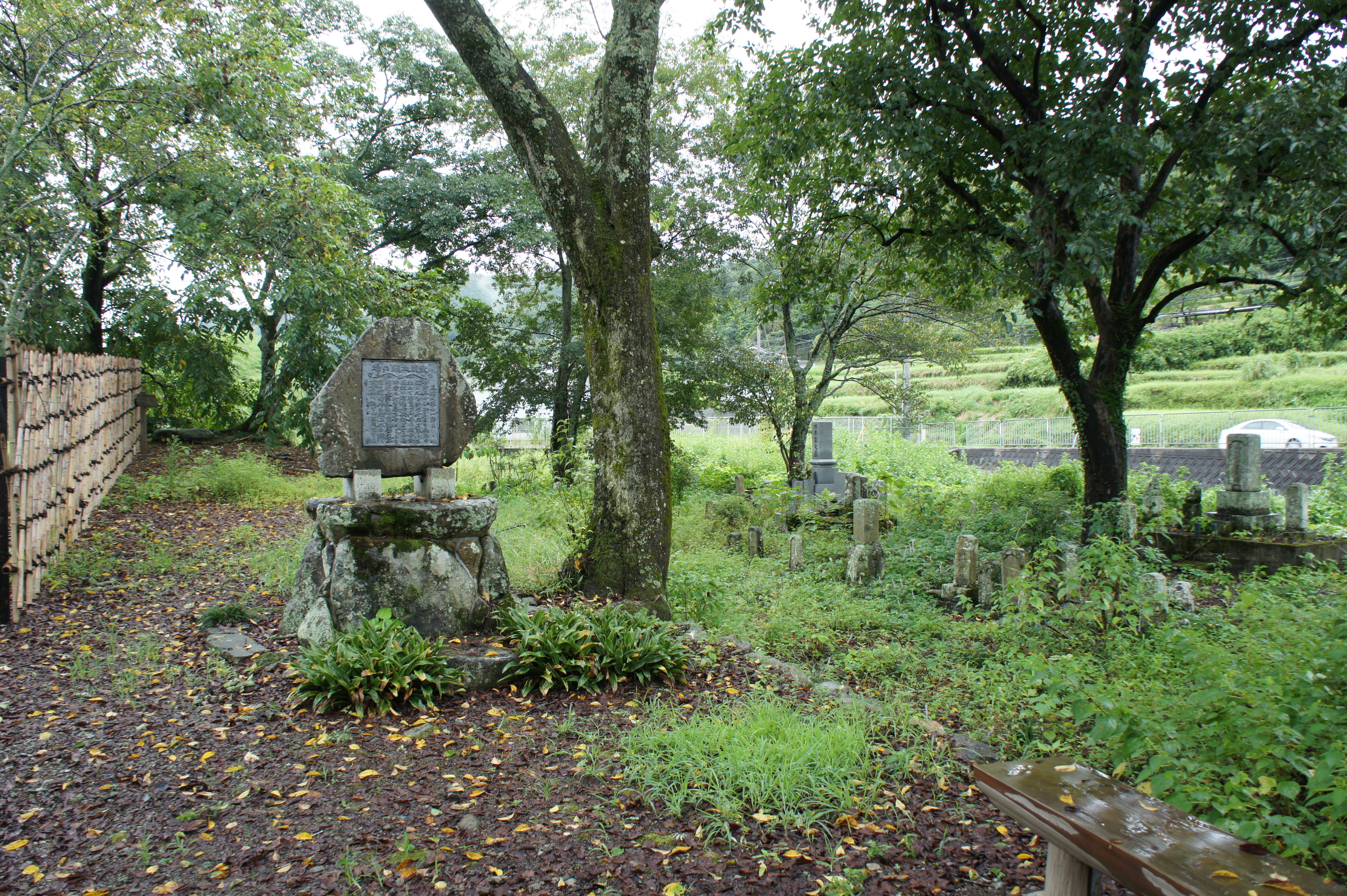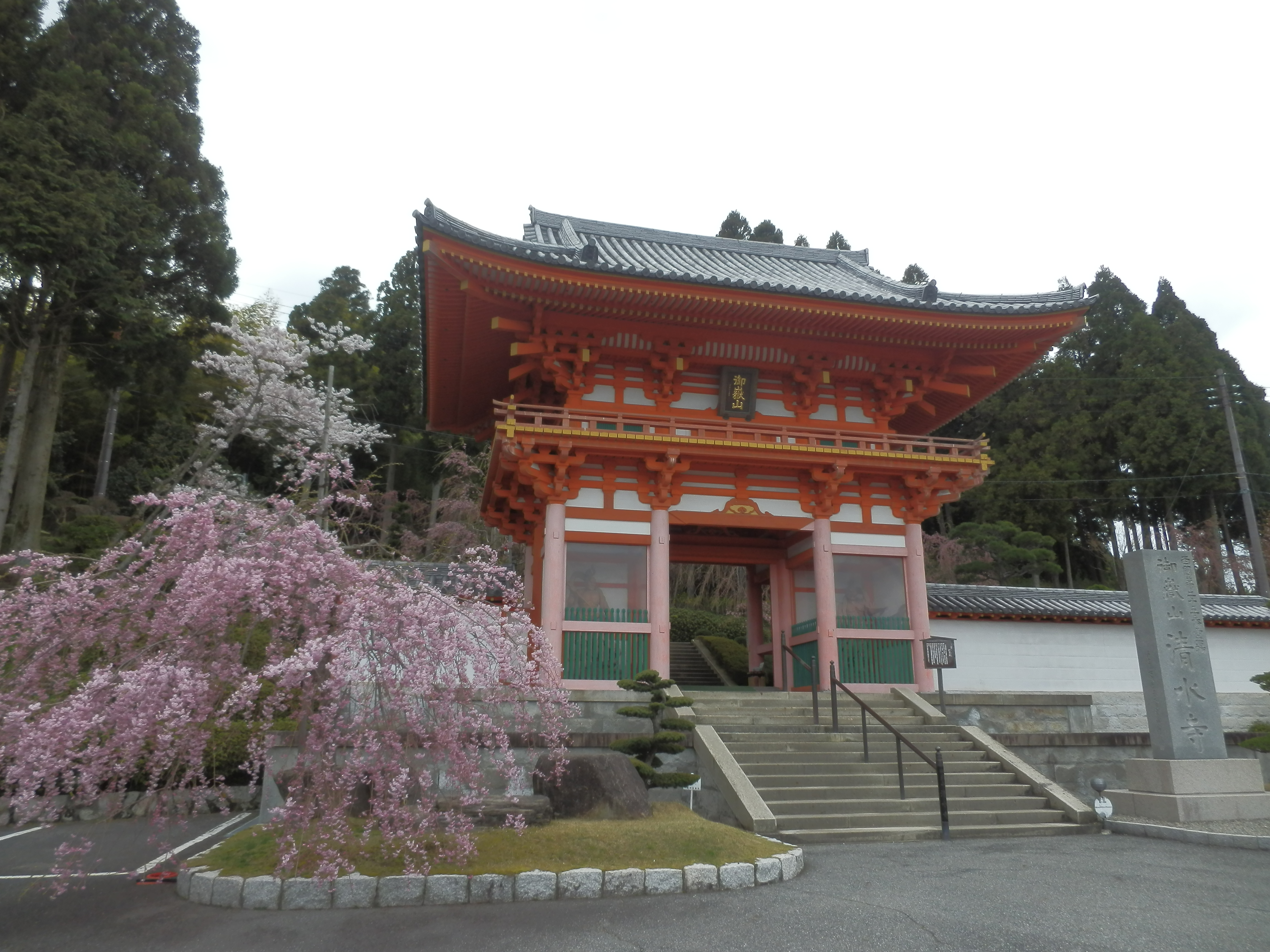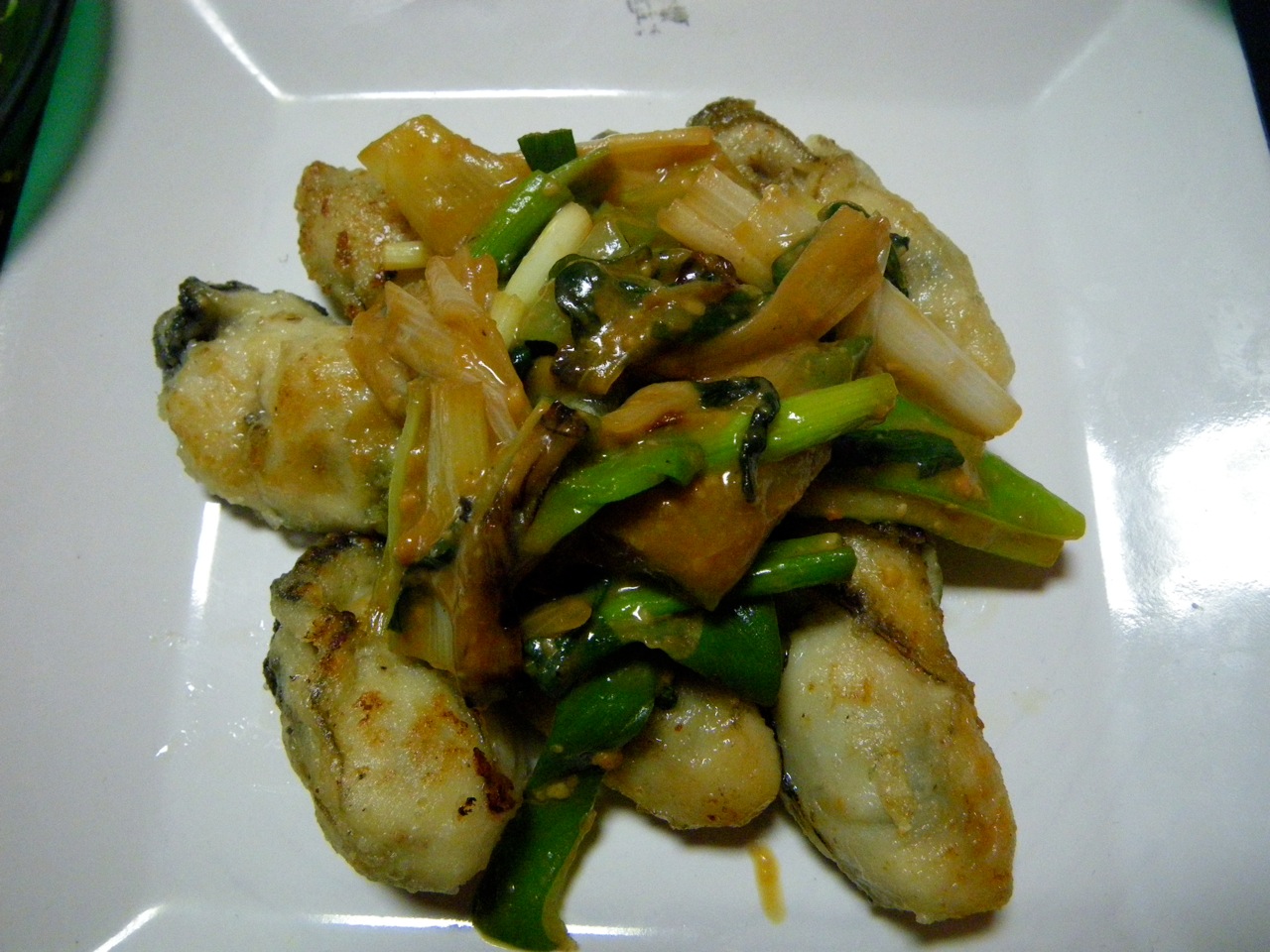Saigoku Kannon Pilgrimage: Sohonzan Nakayama-dera
The easternmost of the pilgrimage temples located in Hyogo-ken is Nakayama-dera, number 24 on the official route. Nakayama-dera is located in the city of Takarazuka, and boasts a beautiful ume grove around back, in which about a thousand plum trees will be in bloom from late February through early March.
Nakayama-dera’s claim to fame is babies. It’s a popular temple in the area for prayers regarding safe delivery, and there are special amulets on sale here with respect to this –you can even buy a belt to wear over a pregnant belly to bless the child inside with health and safety. From the 1300s, many emperors have been known to pray here for the safe delivery of their heirs; even nowadays, if the Imperial wife becomes pregnant, the chief abbot himself brings her a blessed belt from this temple. It’s the first temple I saw that was fully equipped with sun-shaded escalators to help all the pregnant ladies get around.
The original Nakayama-dera temple is said to have been built by Prince Shotoku, 6th century, in the mountains up above the current location, but it was burned down during civil wars, and the present setup was built by Katagiri Katsumoto, ordered by Toyotomi Hideyori (son of that infamous Hideyoshi).
There are many sub-temples clustered around, most of them relating to the needs of children and parents, including helping babies to stop crying at night, fertility, entrance exams, and pregnancy loss. There are also sub-temples for each of the twelve zodiac animals.
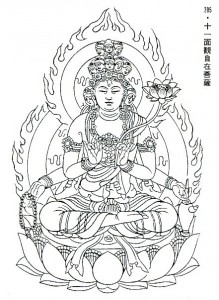 The principal image at this temple is another Juichimen Kannon, or the eleven-headed type we saw at Banshu Kiyomizu-dera. This one is open to public view monthly, on the 18th. The statue was modeled on Queen Srimala, an Indian patron of Buddhism, so it has foreign-looking features and a more elaborate headdress than other Kannon images you might have seen. The image is in between two other Juichimen Kannon images, together having 33 heads, and it’s said that if you cannot complete the full pilgrimage, praying earnestly before these three statues will give the spiritual effect of completing the pilgrimage.
The principal image at this temple is another Juichimen Kannon, or the eleven-headed type we saw at Banshu Kiyomizu-dera. This one is open to public view monthly, on the 18th. The statue was modeled on Queen Srimala, an Indian patron of Buddhism, so it has foreign-looking features and a more elaborate headdress than other Kannon images you might have seen. The image is in between two other Juichimen Kannon images, together having 33 heads, and it’s said that if you cannot complete the full pilgrimage, praying earnestly before these three statues will give the spiritual effect of completing the pilgrimage.
The beautiful, clean, modern feel of the place is tempered somewhat by the presence of a kofun just up under the hill to one side of the central courtyard. Kofun are ancient burial mounds, often megalithic in size. You can walk down a short tunnel and take a look at the stone tomb for yourself.
Nakayama-dera also has a fun hiking path up to its okunoin, or most sacred space. The trip takes about an hour and is not particularly tough (though I might not recommend it for pregnant women). There is a sacred spring at the okunoin at which you are welcome to fill your water bottle. White Swan Rock (白鳥石) is also located near the okunoin, said to be the rock on which a white swan alighted after flying out of the kofun lower down the mountain. The white swan is the kami (in this case a deified spirit) associated with letting go of grudges.
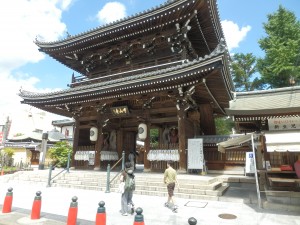 Upcoming special events include setsubun, on which day they will hold special hoshi-matsuri (star festival) performances at 1 and 3pm to kick off the new year and start of spring. The first Sunday of March will be the ume matsuri (梅ã¾ã¤ã‚Š) as the plum blossoms should be in full bloom.
Upcoming special events include setsubun, on which day they will hold special hoshi-matsuri (star festival) performances at 1 and 3pm to kick off the new year and start of spring. The first Sunday of March will be the ume matsuri (梅ã¾ã¤ã‚Š) as the plum blossoms should be in full bloom.
Getting to Nakayama-dera is easiest by train. From Hankyuu Nakayama station, it’s a one minute walk north. From JR Nakayamadera station, it’s about 15 minutes. The walk is pretty well signed, but if you are confused, ask at any combini, or anyone you pass on the street for that matter.
Happy travels!
Emily Lemmon
More information about how to get to Nakayama-dera (Japanese, but map/diagram provided): http://www.nakayamadera.or.jp/ac1.html
Nakayama-dera main page (Japanese): http://www.nakayamadera.or.jp/top.html
More information about Nakayama-dera (English): http://sacredjapan.com/Temple%2024/Temple%2024.htm
Information about Setsubun (Japanese): http://www.nakayamadera.or.jp/sub3.html
